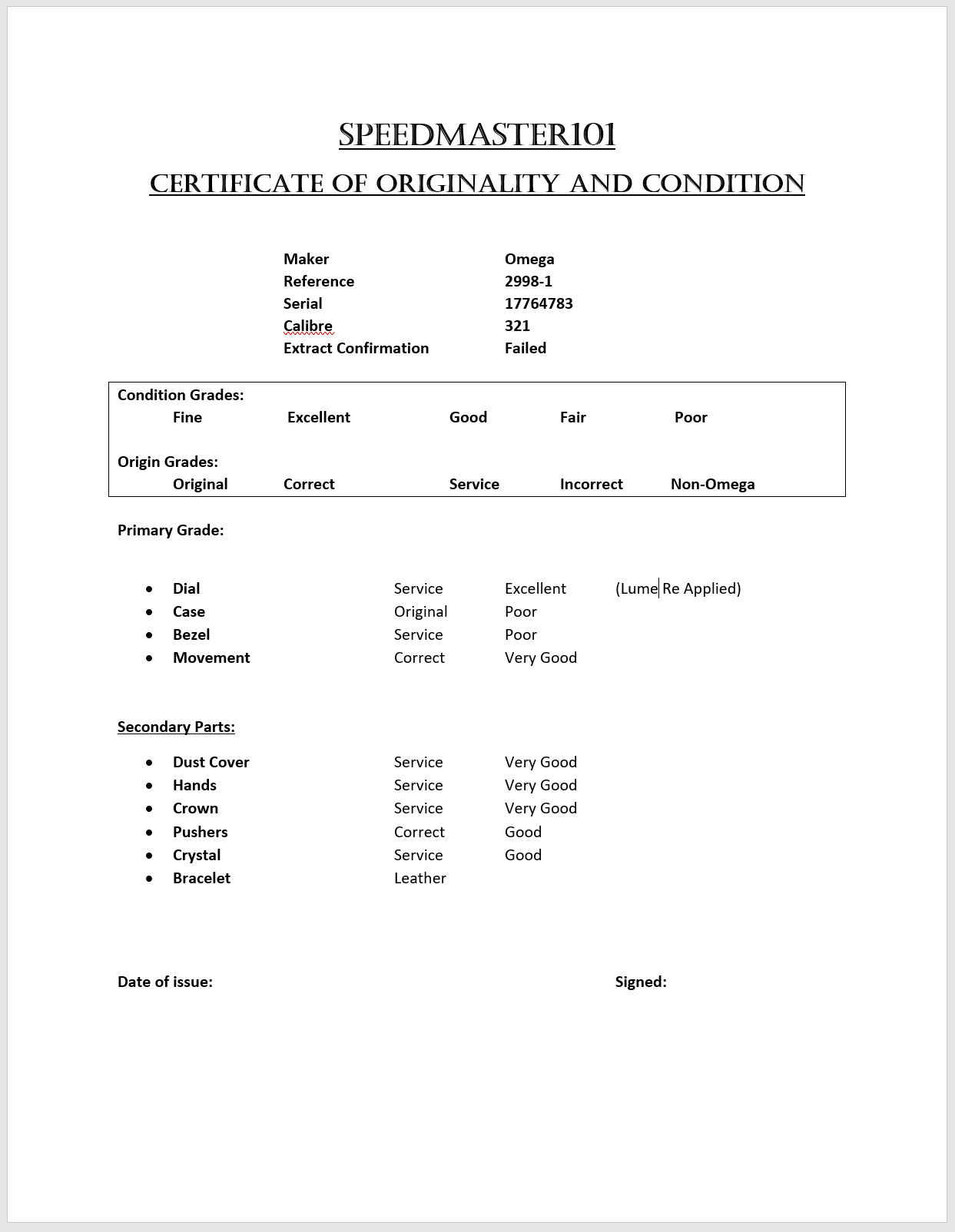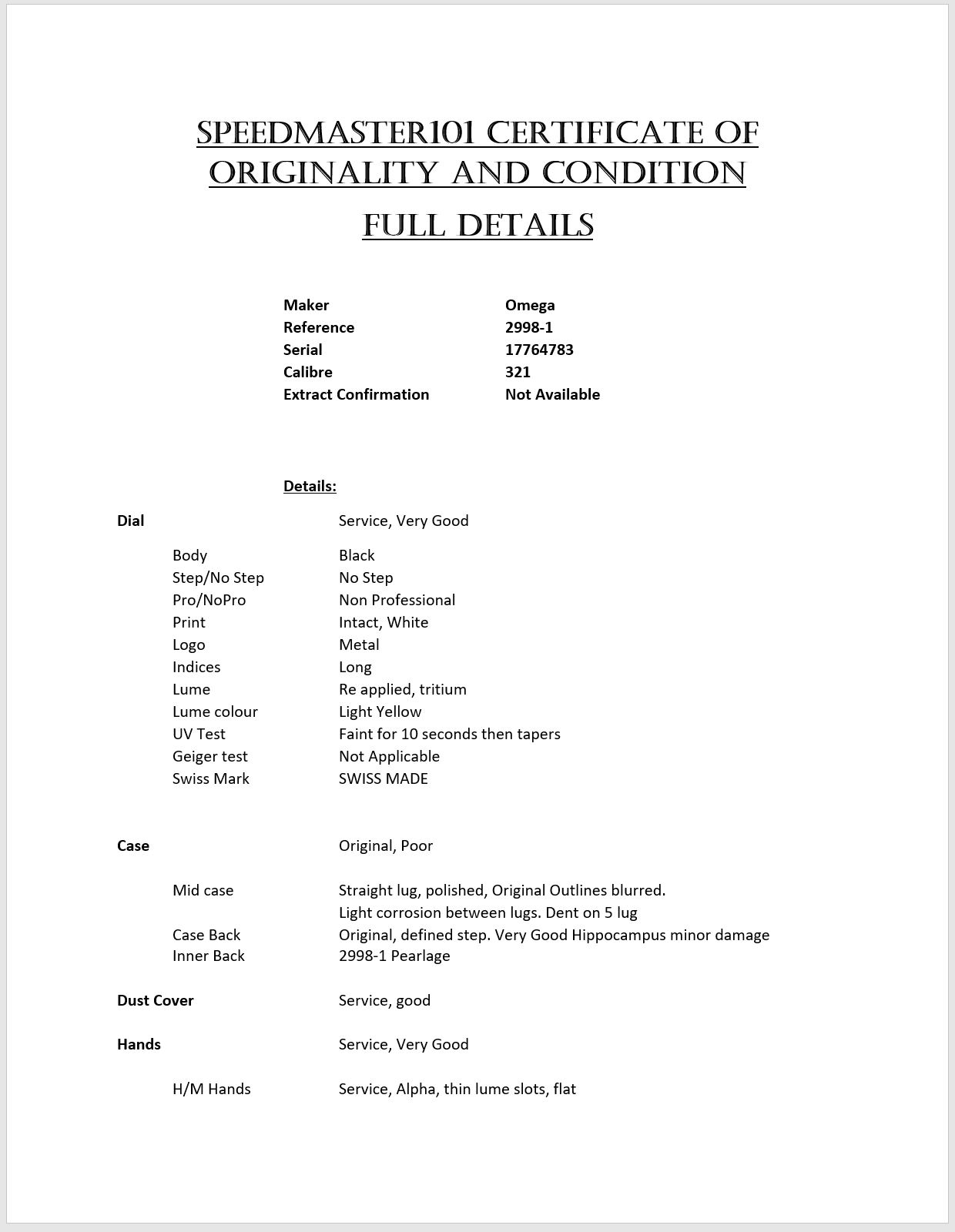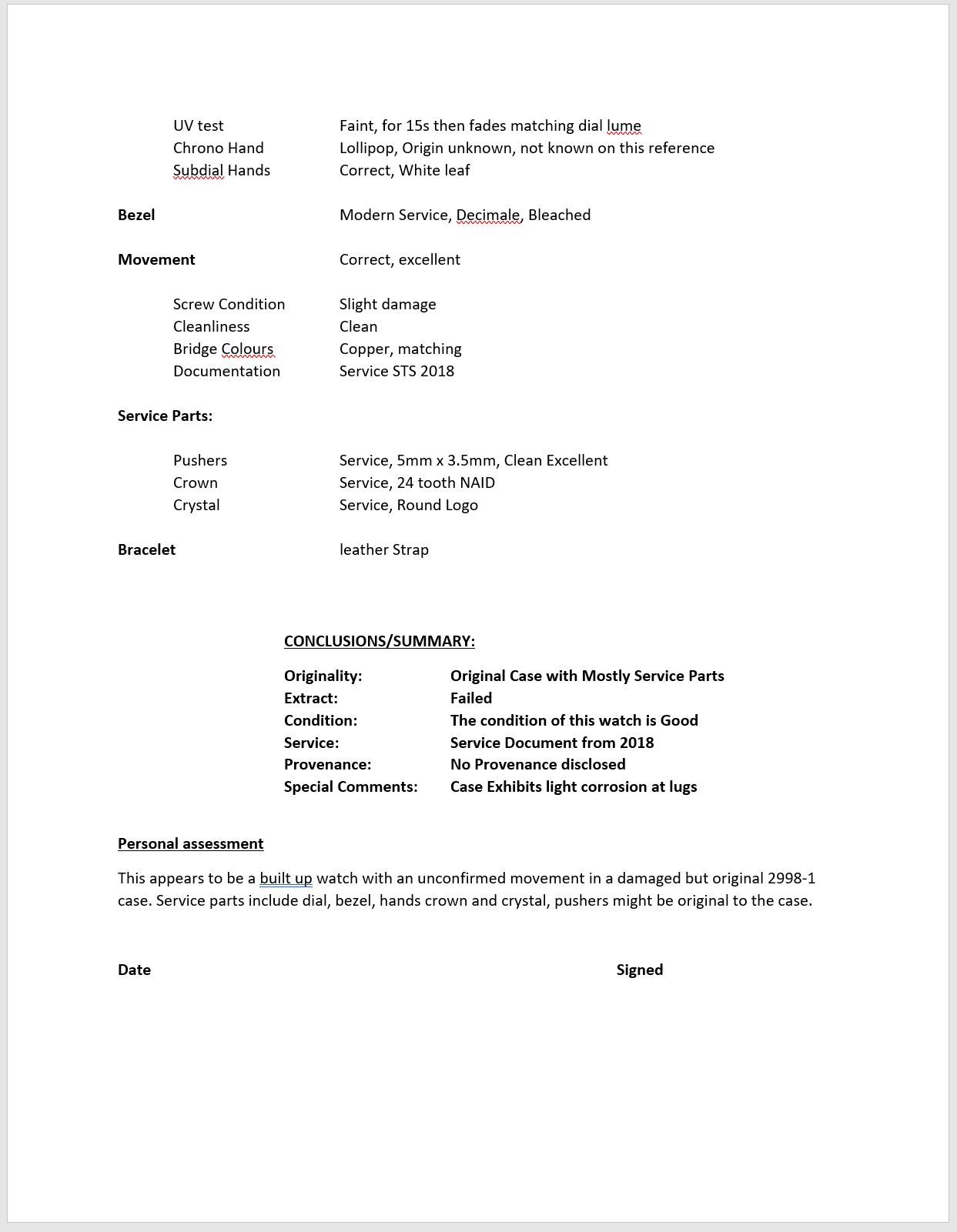SP101TPA
Posted on |
Third party authentication for Speedmasters
I have been for some time been working on a TPA for Speedmasters.
My aim is to make a system that is reliable, simple to understand, and transferable in that someone other than me who goes through the protocols I lay down, will produce a very similar appraisal.
I wanted the resulting paper to be short, concise and useful.
Should the watch be present in hand? Well ideally yes, even though my process is to take about 25 hi res photos and study them on a large screen. As long as I trusted the source, it could be done on photos.
The Process
1. Confirm the watch state, reference, serial, extract info
2. Photograph the watch, and make sure I get in focus clear images that include: Dial plots, dial script, bezel details, each lug inside and out, case back, case threads case back threads, case back inner, four movement shots, six shots of case sides, pushers, crown, hessalite.
3. Assess the parts in the following order:
Dial, Bezel, case, movement, hands, pushers, crown, crystal
assign an originality label to each, using the following categories:
- Original
- Correct
- Service
- incorrect
- Non-Omega
And a condition Grade
- Excellent
- Very Good
- Good
- Fair
- Poor
Assign any Special Comments:
Include here notes on Racing Dial, Blue Dial, Tropical, etc
An Example:
Here is a watch I deliberately chose as it is an assembly of parts based on a damaged but genuine 2998-1 case. Note that the photos are numerous, and zero in on any issues or areas that need attention. For example, the dent, the bezel alignment mark, the lug hole positions, the dial details and so on. If I was working from photos alone, I may often ask for further photos.
This would be the resulting “Short Certificate”.
Things to note that you can glean immediately are the failure to have the movement confirmed, the service dial, the damaged case, and the service bezel. For most, if they read this they would know this is an assembled watch with either poor or service components.

Here is the “Long Certificate” which simply goes deeper. It is not necessary in my opinion to distribute this document as the important, comparable information is on the short sheet. Once that has proved interesting then perhaps this can be offered, but for me the photographs would be more important after seeing the short sheet.


There is further documentation, consisting of a confidential lab sheet containing printed and handwritten notes – this is not to be shown or distributed, but held on record in case of any dispute or query.
I honestly do not know if this idea has any mileage, or if I want to have anything more than a system for my own private benefit.
The backbone of this process is the four-page worksheet I have developed. I have used this system for years and results in a document that starts with printed guidelines and quickly becomes filled with my handwritten notes. I then distil it down, first into the Long Document and finally the short certificate, which enables me then to assign a fairly accurate value, using the chart.

You must be logged in to post a comment.